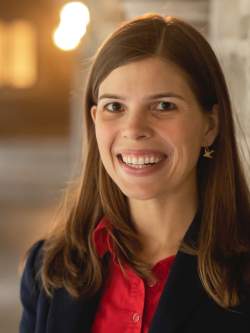Event Date/Time
Location
Please contact the department for the zoom information.
Series/Event Type
Birds evolved about 150 million years ago, and today they are the most diverse and colorful land vertebrates. In my group, we are fascinated by the ecological and evolutionary processes that contribute to avian diversity. We currently study the avian egg, a remarkable structure that is built to break. From an evolutionary perspective, bird eggs are intriguing because they come in a variety of shapes, sizes, colors, and structures despite the fact that they serve the same essential function: to nourish and protect the chick. From an engineering perspective, eggshell is impressive because it is a strong, lightweight material that must serve two competing biomechanical functions. I will describe two recent projects—incorporating evolutionary and engineering perspectives—on egg shape and structure. We also study avian coloration and color vision—especially in wild hummingbirds. I will highlight some recent projects that give a glimpse into the colorful world of birds, with insights from optics, soft matter and mechanics.
Speaker Bio
